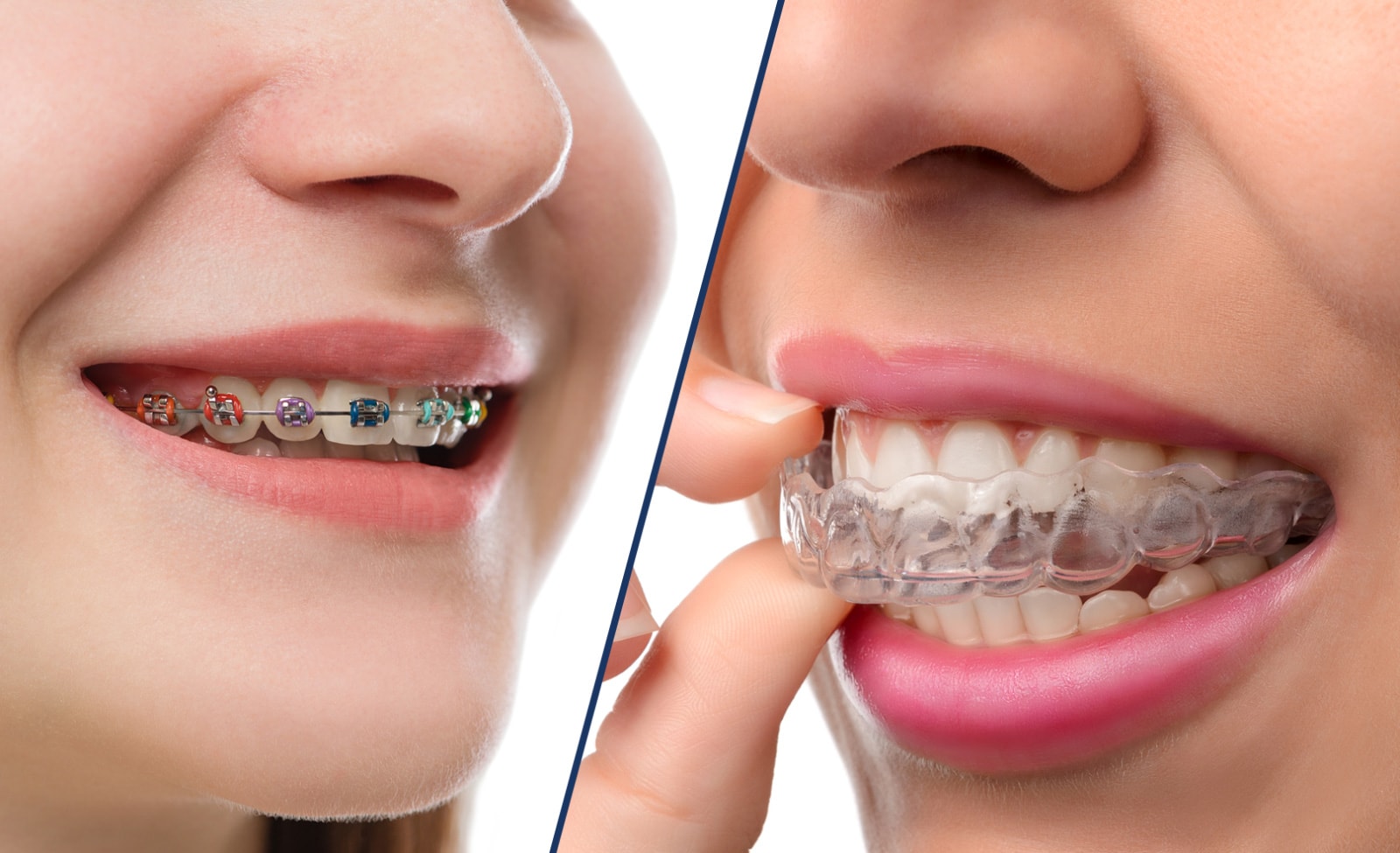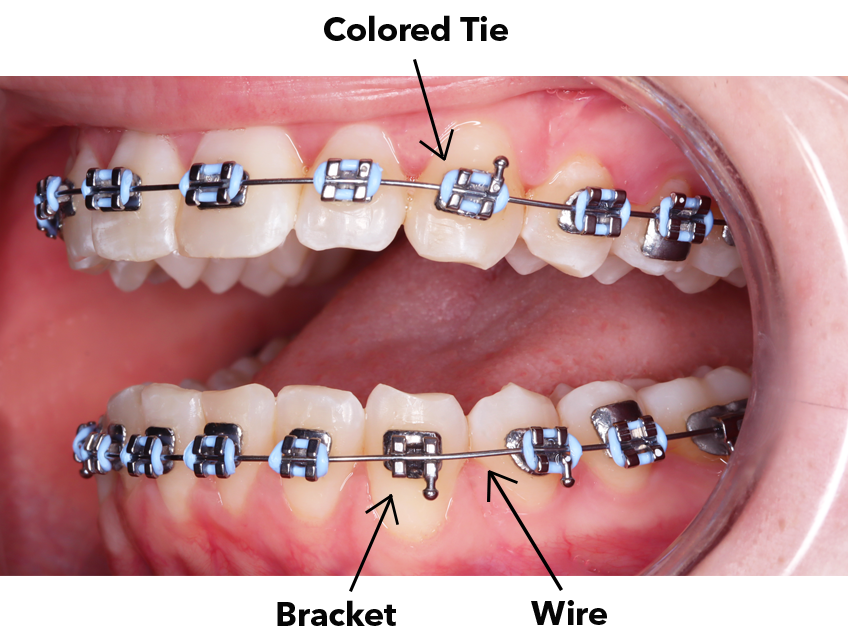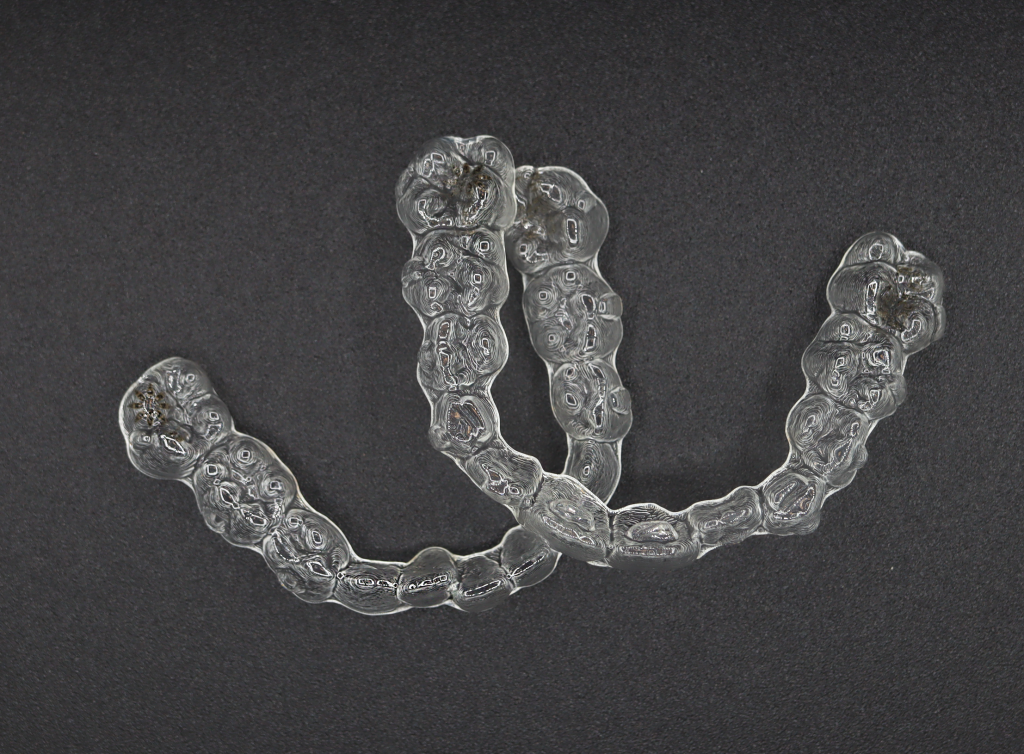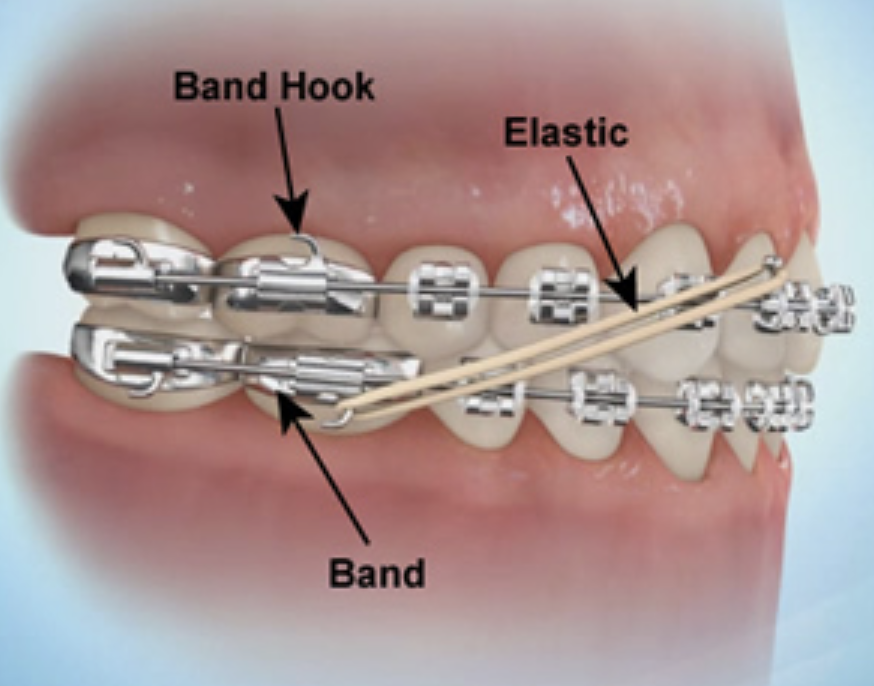

Braces and Invisalign: How They Work
We are all familiar with the purpose of braces and Invisalign. In fact, a majority of us go through orthodontic treatment at some point in our lives. Still, many of us are unsure how they actually work. These two treatments use different methods but always produce the same results: straight, beautiful teeth!
The reason that orthodontic treatment is possible is because of the type of tissue that surrounds our teeth and jaw bones, holding them in place. This soft tissue is a periodontal ligament that has the ability to stretch or compress.
This ability allows our teeth to shift through the tissue when we apply a consistent force on it. As a tooth moves through the periodontal ligament, signals are sent out to cells called osteoclasts to dissolve the bone in that area. Once the teeth set, cells called osteoblasts will come and regenerate bone around the teeth. This process is called bone remodeling and it is a normal function our bodies go through.
Braces



Braces apply force to move the teeth by using a combination of three materials: brackets, wires, and ties. The brackets are small squares that are bonded to each tooth individually using a special glue. An archwire is then run across the brackets on the top and bottom. Finally, a colored tie is then wrapped around each bracket to hold the wire in place.
The archwires, typically made of stainless steel, are bent to meet each bracket. Over time, they will move back to their original arch, bringing the teeth forward into the same orientation.
Throughout treatment, the archwires used will be less flexible, which will apply more pressure on the teeth. Stronger chains, called power chains, may be used during treatment as well. Made of an elastic material, these chains are applied to areas that need extra force, typically for closing gaps.
Invisalign



Invisalign has a different technique for moving the teeth. This consists typically of two materials: aligners and attachments.
The aligners are customized plastic trays that wrap fully around all teeth. These are changed out every or every other week. Each new aligner is slightly straighter than the current teeth so that, over the week, it pushes the teeth into new positions.
Attachments are almost always used in collaboration with the aligners. These are glue composites bonded onto certain teeth and snap into molds in the aligner trays. These attachments allow for a more directional force to be applied to those teeth. The trays will apply a pushing force on the teeth to move them slightly with each new aligner.
Elastics



A material that is used with both methods are elastics. These are little rubber bands that will hook around brackets or metal buttons bonded to the teeth.
The purpose of these is to correct bite issues. The braces or Invisalign will straighten your teeth first, then elastics will be used to adjust the bite.
They work by applying a pulling force on the jaw either pulling it forward or backward. They are typically worn on both sides of the mouth, and with one elastic per side but more may be needed.
If you’re interested in learning about the right treatment option for you, schedule a free consult here or call us at (215) 757-0864.
